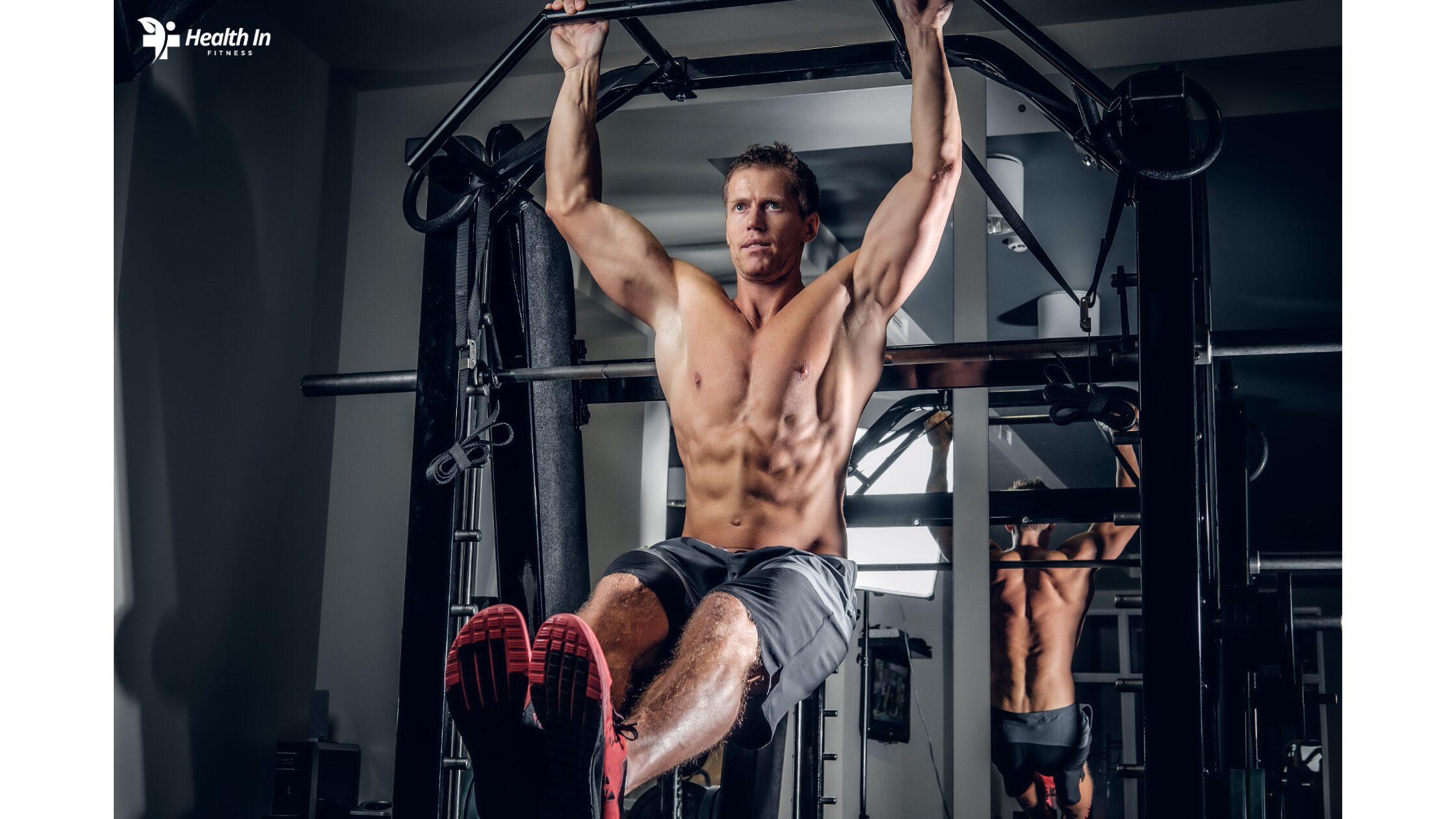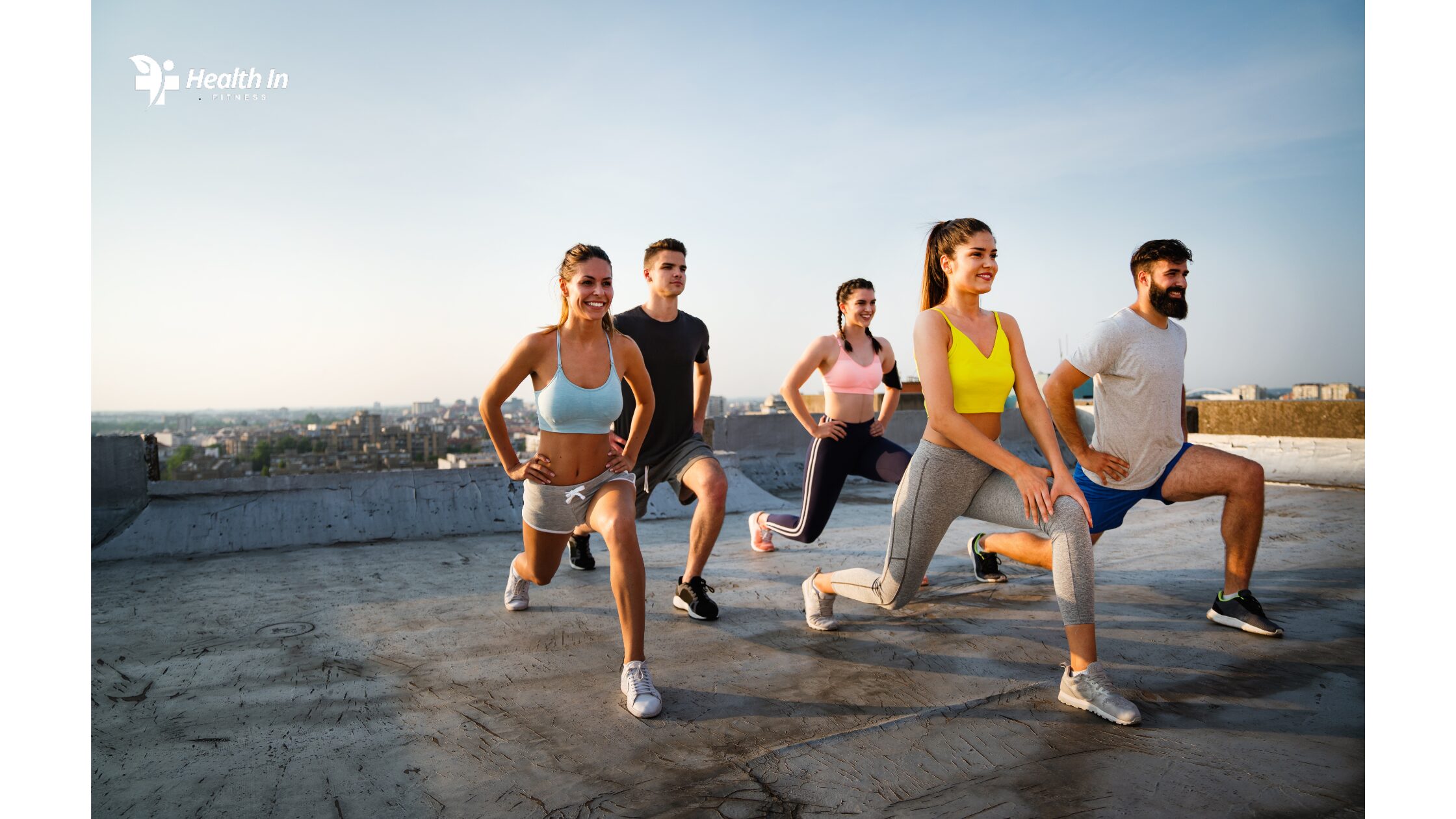Introduction
Gym workouts have long been a cornerstone of fitness routines, offering a structured environment to achieve a wide range of health goals. Whether you’re aiming to build muscle, improve cardiovascular endurance, or simply stay active, the gym provides tools, equipment, and guidance to help you succeed.
This comprehensive guide explores the benefits of gym workouts, outlines effective routines for all fitness levels, and shares tips for maximizing your results. Whether you’re a beginner stepping into a gym for the first time or an experienced fitness enthusiast, this post will help you design a gym workout plan that aligns with your goals.
The Benefits of Gym Workouts
Gym workouts offer numerous advantages, from physical health improvements to mental well-being. Here’s why incorporating gym sessions into your routine is a great decision:
1. Access to Equipment
Gyms provide a variety of machines, free weights, and tools that allow you to target specific muscle groups and perform diverse exercises.
2. Structured Environment
The gym setting encourages focus and consistency, creating a dedicated space for achieving your fitness goals.
3. Professional Guidance
Many gyms offer personal trainers who can create customized plans, correct your form, and keep you motivated.
4. Community Support
Working out in a gym environment fosters a sense of camaraderie and accountability. Group classes or meeting fellow gym-goers can inspire you to stay consistent.
5. Mental Health Benefits
Regular exercise releases endorphins, reducing stress and improving mood. The structured nature of gym workouts can also help you maintain mental clarity and discipline.
Types of Gym Workouts
One of the best things about gym workouts is their versatility. From strength training to cardio, the gym caters to a wide range of fitness needs. Here are the most popular types of gym workouts:
1. Strength Training
- What It Is: Focuses on building muscle through resistance exercises like weightlifting, bodyweight movements, and machines.
- Benefits: Increases muscle mass, improves bone density, and boosts metabolism.
- Examples: Bench press, squats, deadlifts, pull-ups, and dumbbell rows.
2. Cardiovascular Workouts
- What It Is: Exercises that increase heart rate and improve cardiovascular health.
- Benefits: Enhances endurance, burns calories, and strengthens the heart.
- Examples: Treadmill running, cycling, rowing, and elliptical training.
3. Functional Fitness
- What It Is: Training that mimics everyday movements to improve balance, coordination, and strength.
- Benefits: Reduces the risk of injuries and enhances overall mobility.
- Examples: Kettlebell swings, lunges, and medicine ball slams.
4. High-Intensity Interval Training (HIIT)
- What It Is: Alternates short bursts of high-intensity exercises with brief recovery periods.
- Benefits: Maximizes calorie burn in a shorter amount of time and improves cardiovascular endurance.
- Examples: Sprint intervals, burpees, and circuit training.
5. Group Fitness Classes
- What It Is: Instructor-led classes that include activities like spinning, Zumba, and yoga.
- Benefits: Adds variety to your workouts and creates a motivating, social environment.
Creating a Gym Workout Routine
Designing an effective gym workout routine requires balancing your goals, fitness level, and available time. Here’s how to get started:
1. Set Clear Goals
Determine your primary fitness objectives, whether it’s building muscle, losing weight, or increasing endurance. Your goals will guide the structure of your routine.
2. Divide Your Workouts by Focus Area
Split your sessions into different focus areas to target various muscle groups and fitness components:
- Day 1: Upper body (e.g., chest, shoulders, triceps)
- Day 2: Lower body (e.g., legs, glutes, calves)
- Day 3: Core and cardio
- Day 4: Rest or active recovery
3. Incorporate Compound and Isolation Movements
- Compound Exercises: Engage multiple muscle groups at once (e.g., squats, deadlifts).
- Isolation Exercises: Target specific muscles (e.g., bicep curls, tricep extensions).
4. Adjust Intensity Over Time
Increase weight, reps, or sets gradually to challenge your body and prevent plateaus.
5. Prioritize Warm-Ups and Cool-Downs
Start each session with a 5–10 minute warm-up and finish with stretching or foam rolling to enhance recovery.
Gym Workouts for Beginners
If you’re new to gym workouts, starting with a simple and manageable plan will help you build confidence and consistency. Here’s a beginner-friendly workout routine:
Day 1: Full-Body Strength
- Bodyweight squats (3 sets of 12 reps)
- Push-ups (3 sets of 10 reps)
- Dumbbell rows (3 sets of 10 reps per arm)
- Plank hold (3 sets of 20 seconds)
2: Cardio and Core
- 20 minutes on the treadmill (brisk walking or light jogging)
- Bicycle crunches (3 sets of 15 reps)
- Russian twists (3 sets of 12 reps per side)
- Leg raises (3 sets of 10 reps)
3: Rest or Active Recovery
- Gentle yoga or stretching session.
Advanced Gym Workouts
For experienced gym-goers, incorporating advanced techniques can take your training to the next level.
- Supersets: Pair two exercises back-to-back without rest to increase intensity.
- Drop Sets: Start with heavy weights and reduce the load after muscle fatigue.
- Tempo Training: Slow down the eccentric (lowering) phase of each exercise to maximize muscle engagement.
Advanced Routine Example:
- Bench press: 4 sets of 8 reps
- Pull-ups: 4 sets of 10 reps
- Bulgarian split squats: 3 sets of 12 reps per leg
- Plank with shoulder taps: 3 sets of 30 seconds
Tips for Maximizing Your Gym Workouts
- Track Your Progress: Keep a workout journal or use a fitness app to monitor your improvements.
- Stay Consistent: Schedule regular gym sessions and stick to your routine.
- Fuel Your Body: Eat a balanced meal with protein and carbohydrates before and after workouts.
- Hydrate: Drink water throughout your workout to maintain performance and prevent dehydration.
- Listen to Your Body: Rest if you feel fatigued or experience pain to avoid overtraining or injury.
Overcoming Common Barriers
1. Lack of Time
- Opt for shorter, high-intensity workouts like HIIT.
- Schedule gym sessions like appointments to prioritize them.
2. Intimidation
- Start with beginner-friendly classes or use machines with clear instructions.
- Seek guidance from gym staff or personal trainers.
3. Boredom
- Mix up your routine with new exercises or classes.
- Work out with a friend to make sessions more enjoyable.
Taking Your Gym Workouts to the Next Level
As you progress in your fitness journey, gym workouts can become more than just a routine—they can transform into a dynamic, purposeful approach to achieving peak physical and mental well-being. Whether you’ve already established a gym routine or are looking to add more structure, there are advanced strategies and tips that can help you push past plateaus, stay motivated, and maximize results. Below, we’ll explore key strategies to take your gym workouts to the next level.
1. Diversify Your Training Methods
One of the most effective ways to elevate your gym workouts is by incorporating a variety of training methods. Diversifying your routine not only challenges your body in new ways but also keeps your workouts exciting and engaging.
- Strength Circuits: Combine strength exercises with minimal rest to increase endurance while building muscle. For example, pair squats, bench presses, and pull-ups into a circuit format.
- Pyramid Training: Gradually increase and then decrease the weight or repetitions in each set. For example, start with 10 reps at a lighter weight, progress to 6 reps at a heavier weight, then return to 10 reps at a lighter weight.
- EMOM Workouts (Every Minute on the Minute): Perform a specific number of reps of an exercise, such as deadlifts or kettlebell swings, at the start of every minute. Rest for the remainder of the minute, and repeat for a set duration.
Diversified workouts help target different muscle groups, improve overall strength and endurance, and keep your body guessing.
2. Focus on Progressive Overload
Progressive overload is one of the foundational principles of building strength and improving fitness. It involves gradually increasing the stress placed on your body during workouts to promote growth and adaptation.
- Increase Weight: Gradually add more weight to your exercises as you grow stronger. For instance, if you’re bench pressing 50 lbs., aim to increase by 5–10% after a few weeks.
- Add Reps or Sets: If you’re not ready to increase weight, try performing more repetitions or sets of the same exercise.
- Adjust Rest Periods: Shorten your rest periods between sets to increase intensity and challenge your endurance.
Tracking your progress through a workout journal or app ensures that you’re consistently challenging your body and making measurable improvements.
3. Incorporate Active Recovery Days
Recovery is a crucial part of any gym workout routine. Active recovery days are designed to help your muscles repair and rebuild while keeping your body in motion.
- Low-Impact Activities: Engage in low-impact exercises such as swimming, yoga, or walking to improve circulation and reduce muscle soreness.
- Stretching and Mobility Work: Use foam rollers, resistance bands, or dynamic stretches to enhance flexibility and release muscle tension.
- Hydration and Nutrition: Ensure you’re fueling your recovery with adequate hydration and nutrient-dense foods, including protein to support muscle repair.
Active recovery prevents burnout and keeps you feeling refreshed and ready for your next gym session.
4. Build Mind-Muscle Connection
The mind-muscle connection refers to the practice of consciously focusing on the muscles you’re working during an exercise. Studies suggest that this heightened awareness can enhance muscle activation and improve workout effectiveness.
- Slow Down Movements: Perform exercises like squats or bicep curls slowly to feel the contraction and extension of the targeted muscles.
- Visualize the Motion: Picture the muscle group working as you perform each rep. For example, during a bench press, focus on your chest muscles contracting as you push the bar up.
- Engage Stabilizing Muscles: Pay attention to your core and other supporting muscles to ensure proper form and maximize results.
Practicing the mind-muscle connection can help you refine your form, prevent injuries, and get the most out of every rep.
5. Harness the Power of Technology
Fitness technology can be a game-changer for tracking progress, optimizing workouts, and staying motivated.
- Wearable Devices: Fitness trackers like Fitbit, Garmin, or Apple Watch monitor heart rate, calories burned, and workout intensity.
- Workout Apps: Apps such as MyFitnessPal or Strong provide tools to log exercises, set goals, and plan workouts.
- Smart Equipment: Some gyms now offer smart machines that guide your movements and track your performance in real time.
By incorporating technology into your gym routine, you can gain deeper insights into your performance and identify areas for improvement.
6. Prioritize Compound Exercises
Compound exercises target multiple muscle groups simultaneously, making them highly efficient and effective for building strength and functional fitness.
- Squats: Work your quads, hamstrings, glutes, and core all at once.
- Deadlifts: Strengthen your back, legs, and core while improving grip strength.
- Bench Press: Target your chest, shoulders, and triceps.
- Pull-Ups: Engage your back, shoulders, and biceps.
Incorporating compound movements into your routine helps maximize muscle engagement, saves time, and builds a well-rounded physique.
7. Optimize Your Pre- and Post-Workout Routines
The actions you take before and after your gym workouts significantly impact your performance and recovery.
- Pre-Workout Tips:
- Eat a balanced meal with protein and carbohydrates 1–2 hours before your workout for sustained energy.
- Warm up with dynamic stretches and light cardio to prepare your muscles and joints for exercise.
- Stay hydrated to maintain peak performance.
- Post-Workout Tips:
- Refuel with a protein-rich snack or meal within 30–60 minutes after your session to support muscle repair.
- Stretch and cool down to reduce muscle tension and improve flexibility.
- Use a foam roller or massage gun to release tight muscles and prevent soreness.
By prioritizing pre- and post-workout care, you can improve your performance and recover more effectively.
8. Find Your Fitness Community
Working out with others can provide accountability, support, and motivation.
- Group Classes: Participate in gym-hosted group fitness classes like spinning, boot camp, or CrossFit to stay inspired.
- Workout Partners: Find a gym buddy to keep each other on track and make workouts more enjoyable.
- Online Communities: Join fitness forums or social media groups to connect with others who share your goals.
Being part of a fitness community fosters a sense of belonging and encourages you to stay consistent in your efforts.
Why Push Your Gym Workouts Further?
Pushing yourself beyond your comfort zone in the gym isn’t just about achieving physical goals—it’s about developing discipline, building confidence, and cultivating a growth mindset. As you challenge yourself with new techniques, heavier weights, or more complex movements, you’ll see progress not only in your physique but also in your mental resilience and overall well-being.
By diversifying your routine, focusing on proper form, and leveraging tools and strategies, you can continue to grow and thrive in your fitness journey. Every effort you put into optimizing your gym workouts brings you closer to a stronger, healthier, and more empowered version of yourself.
Conclusion
Gym workouts offer a versatile and effective way to achieve your fitness goals. With access to equipment, professional guidance, and a supportive community, the gym provides an ideal environment for improving strength, endurance, and overall health. By designing a routine tailored to your needs, staying consistent, and embracing the variety of workouts available, you can make 2024 the year you take your fitness to the next level.
Commit to your gym workouts today and experience the transformative benefits they bring to your body and mind.


